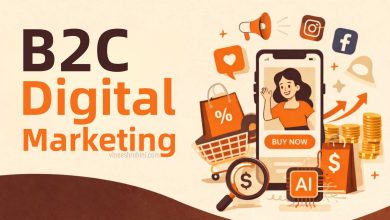The ABCD of Digital Marketing: Understanding the Key Components for Success
Digital marketing is a constantly evolving field that has transformed the way businesses promote their products and services online. The industry is full of various acronyms and terms, and one such set of terms are the ABCD in digital marketing. The ABCD stands for Advertising, Branding, Connection, and Digital. These four terms represent the key components of a successful digital marketing strategy. In this article, we will explore each of these components in detail and explain how they can help you achieve your marketing goals.
A – Advertising and Attract:
The first component of the ABCD in digital marketing is Advertising and Attract. Advertising refers to the paid promotion of your brand, products, or services. This can include search engine advertising, social media advertising, and display advertising. The goal of advertising is to attract potential customers to your website or social media profiles.
Attract, on the other hand, refers to the process of attracting potential customers to your brand through organic methods. This can include search engine optimization (SEO), content marketing, and social media marketing. The goal of attract is to drive traffic to your website and increase brand awareness.
Both advertising and attract are essential components of a successful digital marketing strategy. While advertising can help you reach a wider audience and generate quick results, attract can help you build a sustainable, long-term online presence.
B – Branding and Bond:
The second component of the ABCD in digital marketing is Branding and Bond. Branding refers to the process of creating a unique identity for your brand that sets it apart from competitors. This can include creating a logo, choosing a color scheme, and developing a brand voice.
Bond, on the other hand, refers to the process of building a strong relationship with your audience. This can include engaging with your followers on social media, responding to customer inquiries promptly, and providing exceptional customer service.
Both branding and bond are critical components of a successful digital marketing strategy. While branding can help you establish a unique identity that resonates with your target audience, bond can help you build trust and loyalty with your customers.
C – Connection and Content:
The third component of the ABCD in digital marketing is Connection and Content. Connection refers to the process of building meaningful relationships with your target audience. This can include engaging with your followers on social media, responding to customer inquiries promptly, and providing exceptional customer service.
Content, on the other hand, refers to the information you provide to your audience. This can include blog posts, videos, infographics, and social media posts. The goal of content is to provide value to your audience and position your brand as an authority in your industry.
Both connection and content are crucial components of a successful digital marketing strategy. While connection can help you build meaningful relationships with your audience, content can help you establish your brand as an authority in your industry.
D – Digital and Destination:
The fourth and final component of the ABCD in digital marketing is Digital and Destination. Digital refers to the technology and tools used to create, distribute, and analyze digital marketing campaigns. This can include marketing automation tools, analytics software, and social media management platforms.
Destination, on the other hand, refers to the end goal of your digital marketing campaigns. This can include driving traffic to your website, generating leads, and increasing sales.
Both digital and destination are crucial components of a successful digital marketing strategy. While digital tools can help you create and distribute effective marketing campaigns, destination can help you achieve your marketing goals and drive business results.
In conclusion, the ABCD in digital marketing represents the four key components of a successful digital marketing strategy. By understanding and implementing these components in your digital marketing campaigns, you can attract potential customers to your brand, build meaningful relationships with your audience, establish your brand as an authority in your industry, and achieve your marketing goals.



